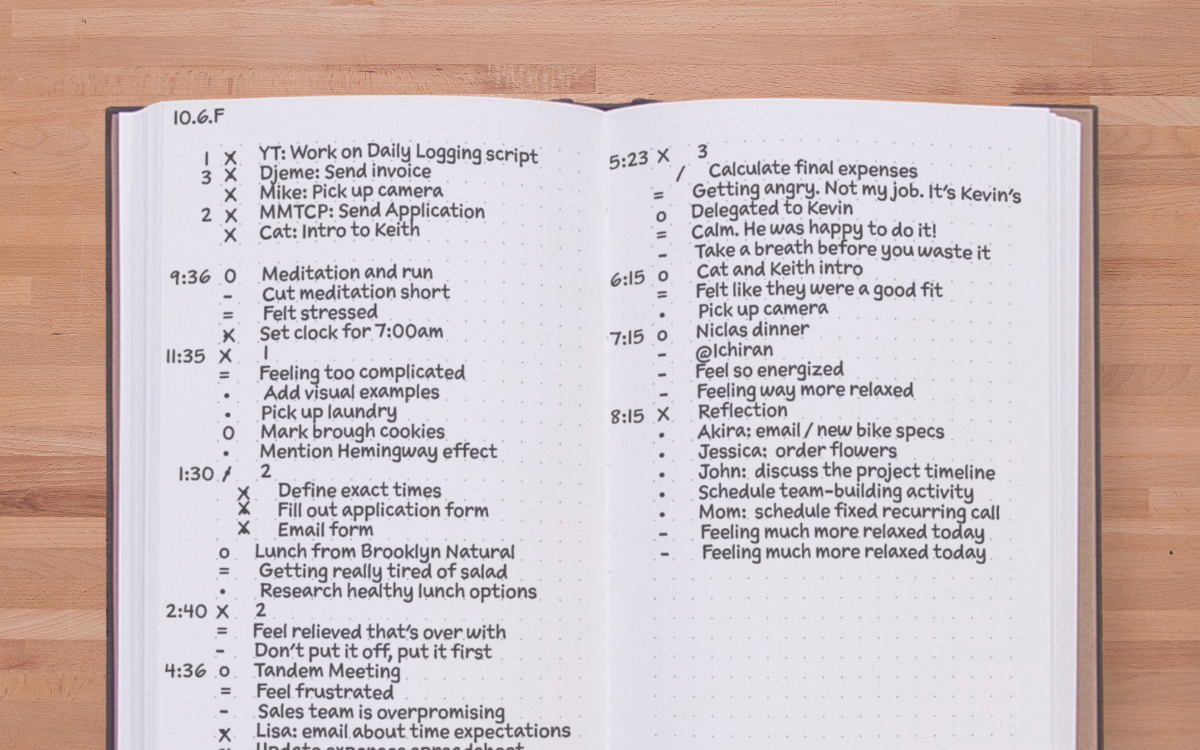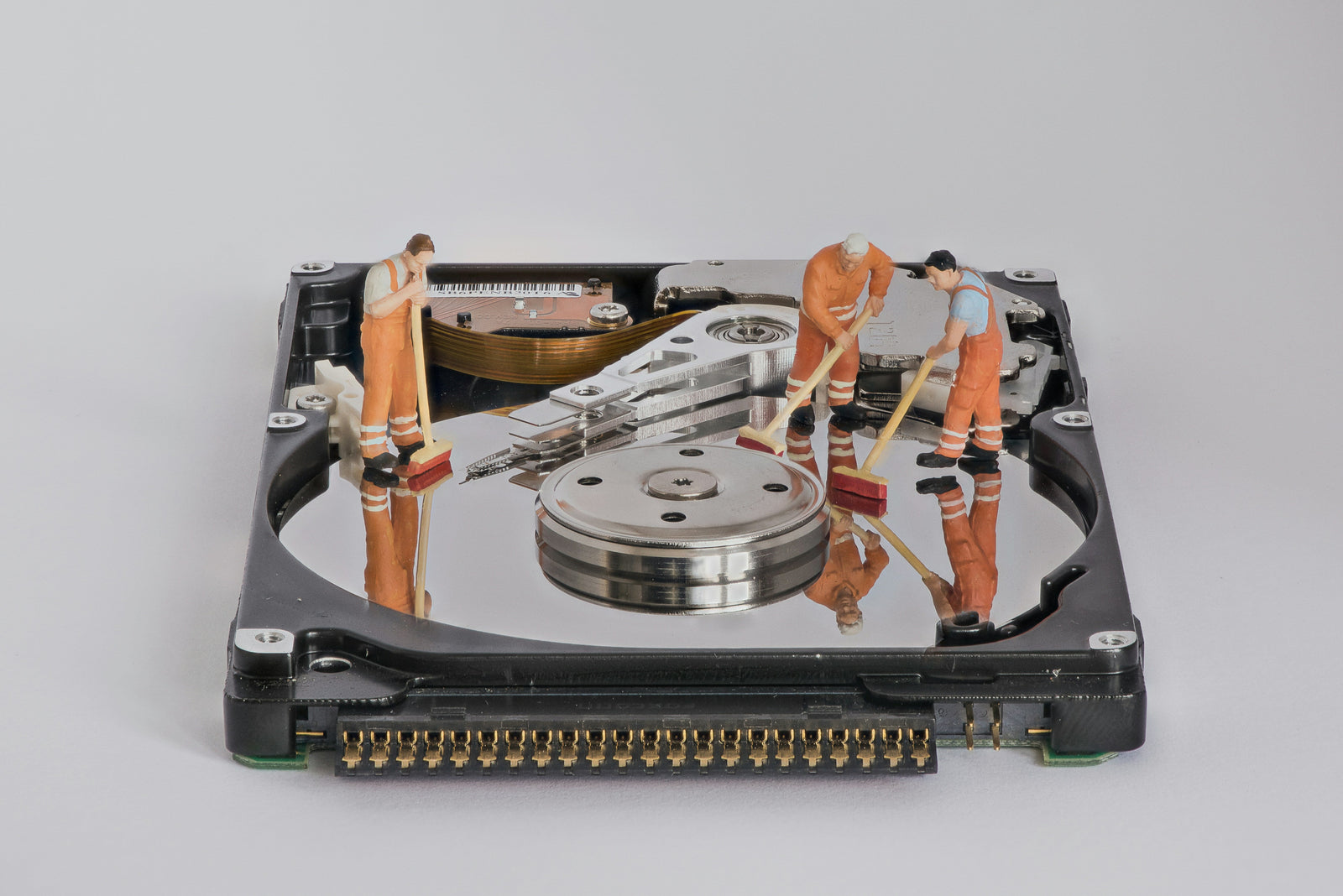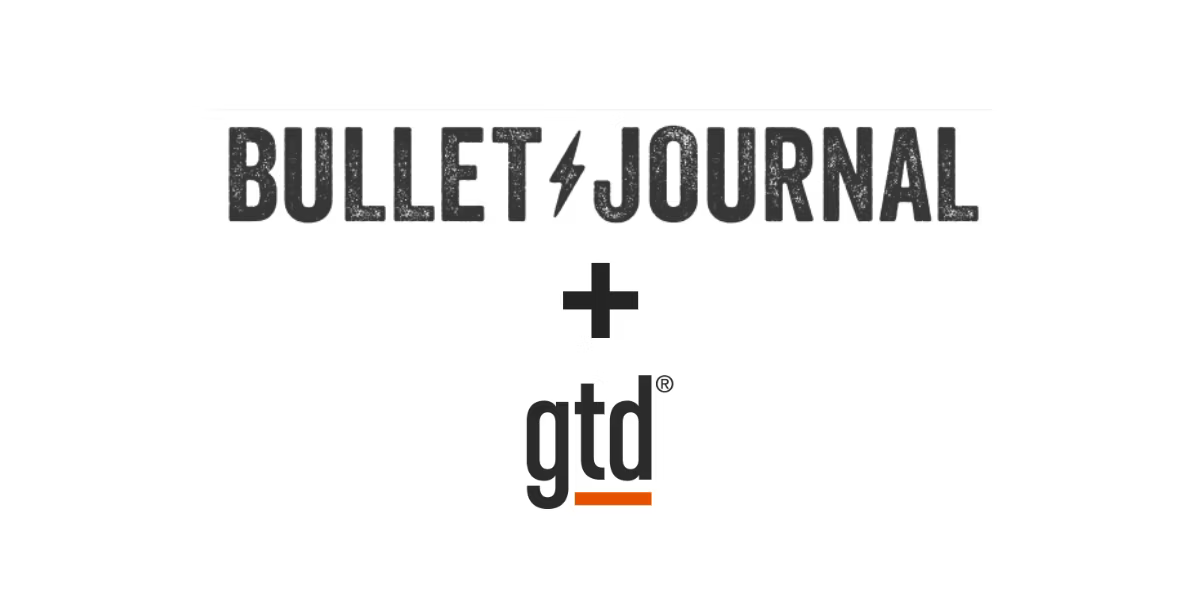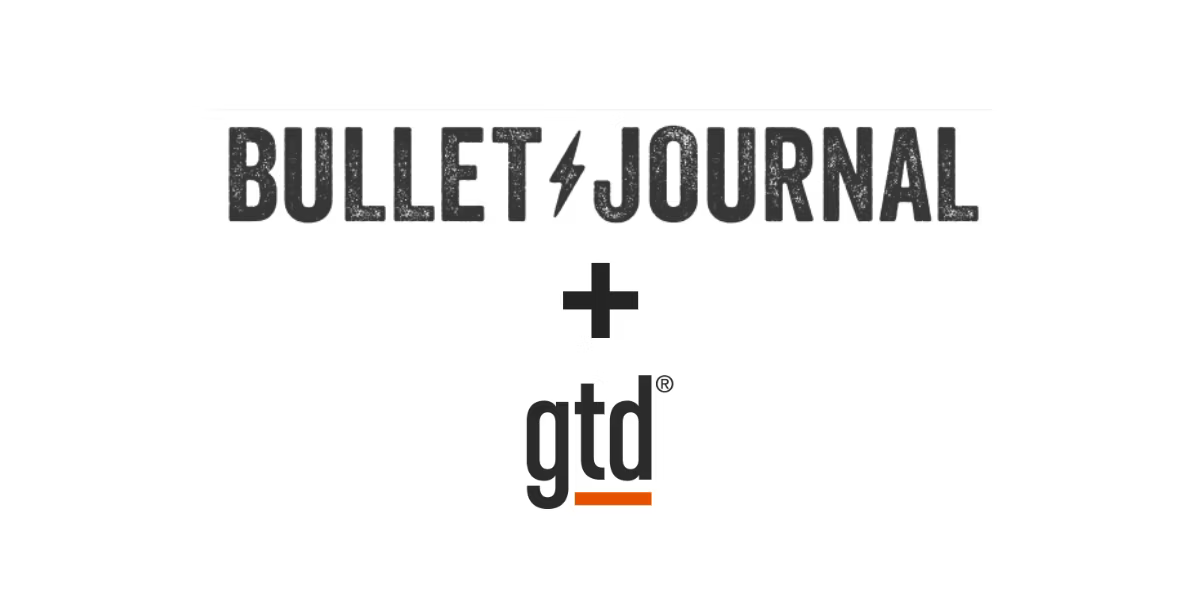When we say “pay” attention, what exactly are we paying attention with? Author Oliver Burkeman puts it this way: “At the end of your life, looking back, whatever compelled your attention from moment to moment is simply what your life will have been. So when you pay attention to something you don’t especially value, it’s not an exaggeration to say that you’re paying with your life.”
Our attention is our most valuable resource. At no time has this been more true than in this age of the attention economy, where it has been commoditized for profit.
There are now so many compelling distractions, that it’s easy to focus on things that add little to no value to our lives...without even realizing it! Furthermore, for everything we pay attention to, there’s also a hidden — yet significant — tax we pay.
In this article, I want to reveal this tax and a simple technique that can help us stay focused on things worth paying attention to.
Rapid Logging
Getting better at investing our attention begins by 1) becoming aware of what we’re paying attention to, and 2) the impact those investments are having on our wellbeing. Various spiritual and psychotherapeutic traditions have shown the many benefits of bringing awareness to our thoughts and feelings regularly by naming them. In Bullet Journal, we do this through a technique called Rapid Logging (RL).
R.L. is a notetaking syntax that combines the structure and efficiency of a concise bulleted list, with flexibility and expressiveness of journaling. It allows me to quickly capture and organize my thoughts and feelings in near real time. The syntax is simple: each thought or feeling is logged as a short bulleted sentence. There are four types of bullets that help me N.A.M.E.* and categorize my thoughts into:
Notes: Indicated by a dash (-), are for logging ideas, insights, dates, data, and facts.
Actions: Indicated by a simple dot (•), are for logging actions. As opposed to checkboxes, Actions can have multiple states, like completed (X), moved(>), canceled, delegated(/), and so on.
Moods: Indicated by the equals sign (=), are for logging feelings. These can be emotional or physical feelings like joy, pressure in the chest, butterflies, anxiety, fatigue, excitement, etc.
Events: Indicated by an open circle (◯), is for experiences, such as appointments, meetings, parties, or deadlines.
By keeping things clean, clear, and concise, Rapid Logging makes it very simple to sustainably capture the noteworthy things in our lives with minimal effort.
The question I often get is: When, exactly, does one Rapid Log?
My answer was “Whenever it feels right.” Though this approach has generally worked very well most of the time, it felt…incomplete. Though in Bujo we have scheduled daily rituals at the beginning and at the end of the day for writing down our thoughts, there’s never been any specific strategy for when to write during the day. This sometimes results in gaps in my Daily Logs, especially when I’m busy.
In the short term, these gaps indicate that I’ve either switched on productivity autopilot or have become distracted. Neither state is ideal when trying to be mindfully productive. In the longer term, the more gaps I have, the less helpful my records become. It wasn’t until I was introduced to another technique by the brilliant Anne-Laure Le Cunff that I finally found the missing piece: Interstitial Journaling
Interstitial Journaling
Interstitial Journaling (IJ) was introduced by Tony Stubblebine. His idea was straightforward: rather than tracking your work with a to-do list, why not track it with a journal? Though this may sound similar to Rapid Logging, it’s different, and they complement each other beautifully. IJ fills in the missing piece: the when.
Interstitial Journaling comes from the word “interstice” which means “a small gap.” So journaling in a small gap. What gap? The gap where a lot of our attention goes missing without a trace, the Bermuda triangle of productivity: the gap between contexts.
How often have you completed a task only to catch yourself an hour into your “five minute” break? How often do you find yourself struggling to work on what you’re doing because you're still distracted by the last thing you did?
Our attention doesn’t function like a switch. Instead, it’s more like honey. Every time we switch context from one thing to another, some of our attention remains stuck to the previous action or event. The more we switch context, the less attention we bring to whatever is next.
Studies have shown the dramatic impact context switching has not only on the quality of our attention but also the quality of our life. The less attention we have, the less present we are, the more mistakes we make, and the more overwhelmed, stressed, and anxious we become.
IJ can minimize the impact of context switching by introducing a small protocol. Rather than randomly journaling your experiences, or waiting until the end of the day, IJ encourages you to write down the following every time you complete what we're doing:
- The time
- A few thoughts about what you worked on last
- A few thoughts about what you will work on next
That’s it! That’s really all there is to it. I had tried this a few years ago, and thought it was somewhat helpful, and then forgot about it. It wasn’t until I recently paired the protocol of Interstitial Journaling with the syntax and intention of Rapid Logging that it transformed the way I keep myself composed throughout the day.
Let me show you how I combined the techniques into what I call Daily Logging.
Daily Logging
For those of you new to Bullet Journaling, each day, we create a Daily Log for organizing- you guessed it- our day.
My Daily Ritual begins by reviewing the past few days in my notebook to see if anything has become a priority for today.
If it has, then I will add that Action to the Daily Log, followed by anything else I need to do today. Then I will prioritize these Actions. This is my Daily Action Plan. Once that is set up, I begin Daily Logging, which looks like this:

In the example above, you can see how in just three short sentences I can quickly generate a meaningful snapshot of my life. I can see what impact an event had on my thoughts and feelings. I can then use that insight to generate a solution. In this case: to wake up a bit earlier to alleviate that stress in the future.*
This may seem insignificant, but imagine finding just one small way to reduce your stress, anger, or sadness from your life every day.
By the end of the year, you could be removing hundreds of points of friction from your life. Sometimes the best way to experience more joy comes from removing what is making us suffer.
Clarity
One study suggested that it can take up to 23 minutes to refocus when we are interrupted. Now think about how many times you have to interrupt yourself throughout the day to switch tasks.
Even if you’re switching between the same two or three things, you can easily spend more time trying to refocus, than doing the actual work. That’s if you can get refocused. Daily Logging makes this transition easier in two meaningful ways.
Let’s continue with the example above by adding the final entry before I switch, which is the next thing I will focus on.

The first way Daily Logging reduces the impact of context switching is by reducing the cognitive load that inevitably builds up throughout the day. During the work, we can Rapid Log whatever comes up, whether it’s related or not. Trying not to forget something can be very distracting.

When we have to move on from what we’re doing, we can quickly offload our thoughts about the last thing we worked on while it’s still top of mind. Regularly decluttering our mind this way not only frees up mental resources to better focus on whatever's next, but it also creates the conditions for a Hemingway Effect.
Supposedly, author Ernest Hemingway would intentionally finish his day of writing in the middle of an idea. It was a strategy that allowed him to quickly pick up where we left off the next day. Similarly, Rapid Logging a few notes at the end of an action can help us quickly re-enter that headspace when we come back to it later.
Below, you can see what that looks like in practice. First I add the timestamp, and then Rapid Log anything I want to get off my mind before moving on. Though entries are all over the place, the timestamp helps provide the context to clearly contextualize the entries through the focus of this stretch of time.**

** If you’re a strong mono-tasker, you can indent entries to provide a much clearer visual hierarchy. If you’re not, like me, then I would suggest avoiding it because you lose the flexibility of being able to log random thoughts.
Accountability
When I was first starting off, the timestamps did add a layer of stress because there was a lot of judgment involved. After all, this was a new protocol, so I would forget to do it. Sometimes hours would go by with no record.
I had been working, I just had not been logging. This was frustrating, so I stopped adding timestamps, but I did keep up the other two behaviors: write about what happened, and decide what to focus on next. As I became more familiar with this new behavior, I added timestamps back in and it clicked.
By logging the time when I switch context, I organically create a precise record of my attention… including distractions.
Creating a clear list of what I was paying attention to, and for how long, helped me identify and reduce time sinks and prioritize actions much more effectively all day long. It felt like gamified accountability. How long could I stay on task? Could I keep the flow going?
When I Daily Logged, I would feel better throughout the day. When I didn’t, I would feel a gradual decline in both my attention and motivation. This realization came from Daily Logging!
Simply pausing to process my thoughts was not just clarifying, it was also calming, reducing my need to regulate any stress by scrolling on social media or falling down some internet rabbit hole. In other words, it was a gentle and sustainable way to remain in flow and focused.
So if the timestamp stresses you out, or feels too complicated, leave it out. The main thing is to remain accountable for your attention by developing the habit of logging your thoughts and feelings every time you switch context throughout the day.
Refocus
Despite my carefully crafted Daily Action Plan, something often comes up throughout the day that feels more urgent. If I’m not careful, l react, spending much of my day putting out little fires, while my plan goes up in flames. This is how I can find myself in a reactive hamster wheel: putting out fire after fire after fire.
The introduction of Daily Logging allowed me to regularly pause, step back, and collect my thoughts before choosing what to work on next. This has proven tremendously helpful in preventing me from switching on productivity autopilot and stepping right back on that hamster wheel.
The trick here is to define the one thing that matters most. After offloading my thoughts and feelings about the last action or event, I pick one thing to focus on, just one. The exception here is when I notice that this one action feels heavy, then I will use this opportunity to break it down into smaller action steps. This makes consistent progress more likely.
If you time block, which I do, you use the pause before your time block to break apart the alotted time assignment into smaller actions, and then work your way through them.
Otherwise, I feed my morning actions in one by one until I’m done. If something else comes up, I can feed them in wherever it makes sense. Daily Logging this way introduced a powerful sense of direction, flow, momentum, and agency into my workday. Most of all though, it has imbued my day with a deeper sense of presence.
If you use Dedicated Collections in your Bujo practice, like a Reading Log, you can also thread an action here. So you add something like
- Read for 30 mins > 96 (96 would be the page of your Reading Log for example)
Presence
Mindfulness is the practice of being present to what is. If that sounds too woo or painful, let me put it this way: becoming present can be the most productive thing we can do, as the only time to change or connect is only always now.
Now is where we change the script, now is where we apologize, now is where we love, and now is where we begin. The problem is that now is rarely a good time.
Mindfulness practices are often relegated to controlled environments like a meditation cushion, a yoga class, a walk in the park, or a nook at our favorite cafe. And though it’s important to carve out these times for ourselves, most of our lives are lived outside of them. It can be very hard to remain present when the fires of daily life flare up.
Daily Logging can help us remain anchored by providing not only a real-time awareness of what we’re doing but also how we’re doing.
Every time I transition, I have a chance to slow down, take a breather, and briefly check in with myself. Simply that pause can help turn off my autopilot.
Then, using the Mood bullet, I quickly Rapid Log how I’m feeling about what I just did or experienced, and what I am feeling or thinking right now. Every gap becomes an invitation to return to the present.
Daily Logging
The quality of our thoughts determines the quality of our lives, yet we can get so busy living those lives that we forget to exercise any quality control. Or we busy ourselves to intentionally avoid that responsibility altogether.
Whatever the case may be, our thoughts and feelings will remain, running our lives in the background until they’re processed. Until they are, whatever anger, fear, anxiety, or frustration lingers in the background will continue to color everything we do, say, think, and feel.
Daily Logging provides a lightweight ritual to take responsibility for our experience.
Writing things down can help us regulate, reduce, and even release some thoughts and feelings before they get stuck. In times when it can’t, Daily Logging can still help us become aware of them. Over time, this written record will generate a map of our emotional landscape.
When we examine this map during Bujo’s Daily, Weekly, and Monthly Rituals, we’re able to zoom out to identify patterns that are either adding or subtracting from our lives.
We can begin to connect the dots. In other words, we not only become aware of what we've been paying attention to but also what the return on those investments has been. In short: are we focusing on things that are paying off?
Though our attention may be a resource, paying attention is both a skill and an art. As a skill, it’s about training our ability to focus. As an art, it’s about developing a sense of the things worth focusing on.
The only way to cultivate both begins by paying attention to our lived experience.
To quote John Dewey, “We do not learn from experience... we learn from reflecting on experience.” Daily Logging provides a simple way for us to reflect on our experience to help us discover what’s worth paying attention to. I hope it serves you well.
*For those eagle-eyed readers, you may note that the names of the core Bullets are different here. Yes, that’s true. We will be exploring what and why in future articles.






Peter J P
September 28, 2024
Hi
I was recently diagnosed ADHD at 59. Do you have a tutorial about prioritising daily to do lists and tasks?
Many thanks.